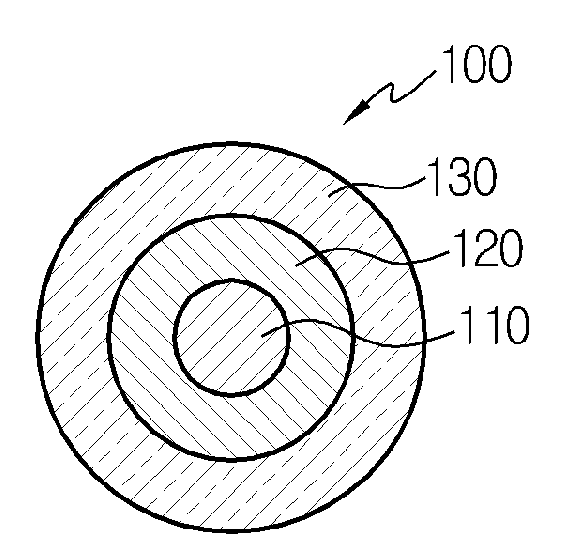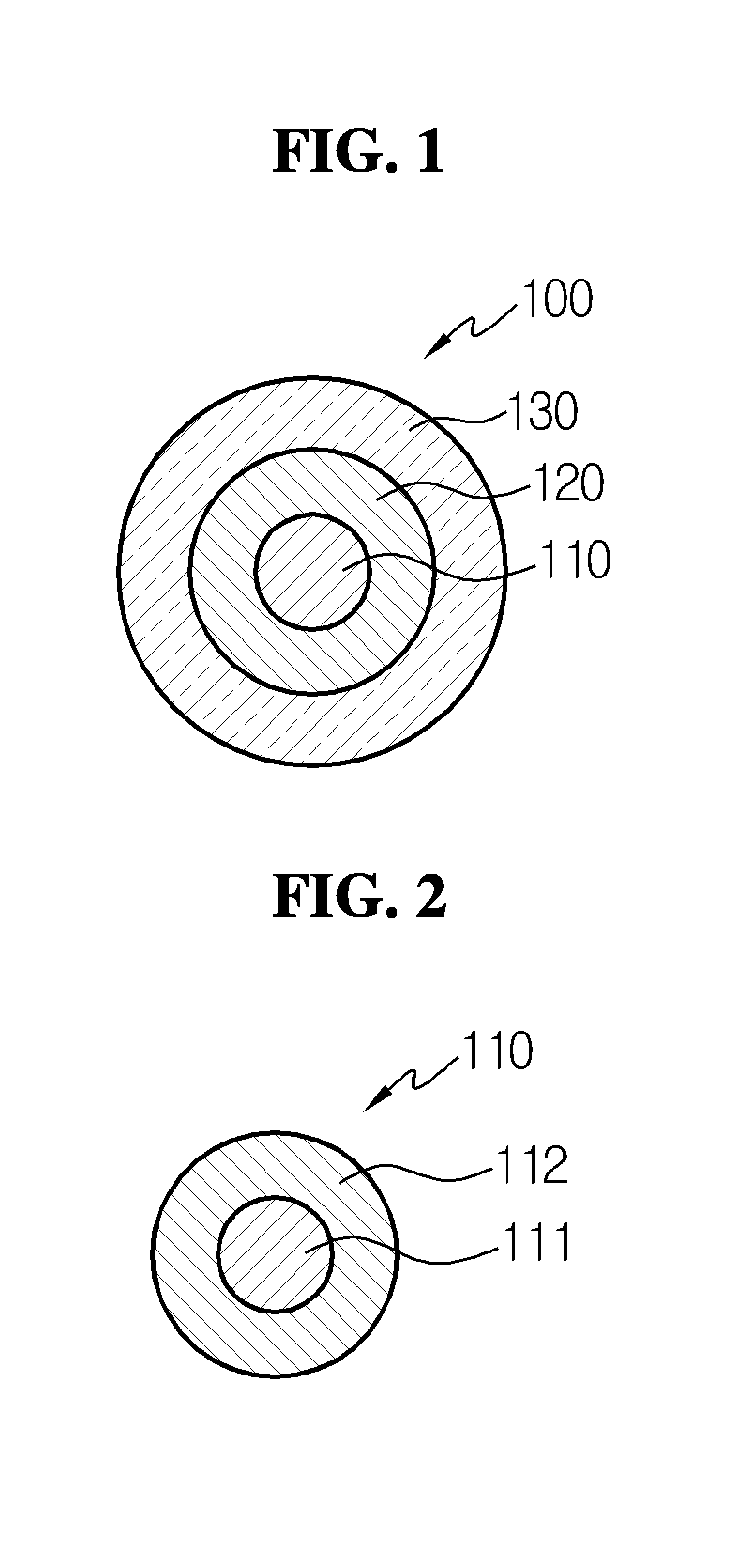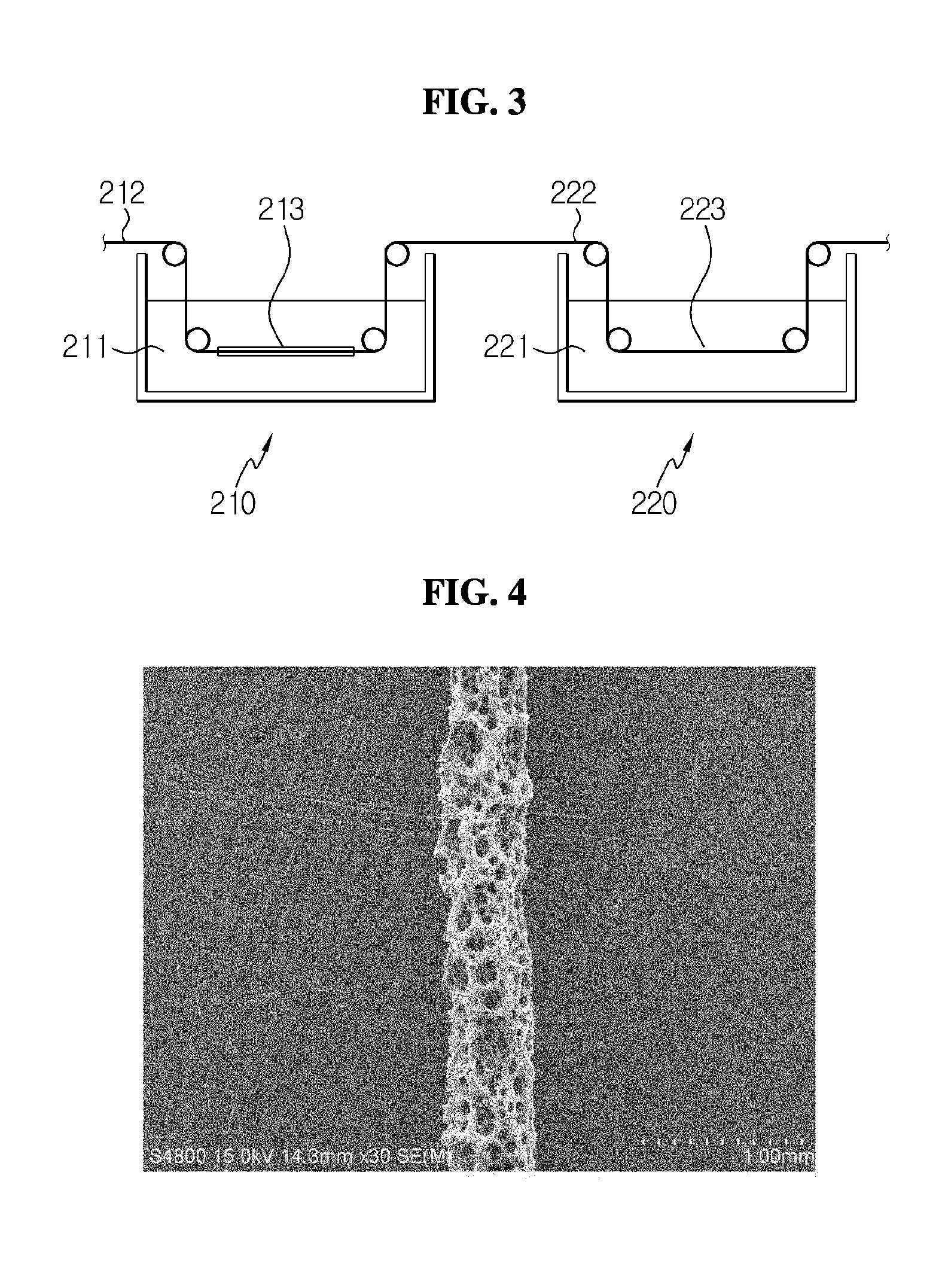Anode of cable-type secondary battery and manufacturing method thereof
- Summary
- Abstract
- Description
- Claims
- Application Information
AI Technical Summary
Benefits of technology
Problems solved by technology
Method used
Image
Examples
experimental example 1
Pore Structure of Porous Anode
[0065]FIGS. 4 and 5 illustrate SEM images of the porous anode manufactured according to Example 1. As shown in FIG. 4, it can be determined that an Sn-based anode active material layer of a three-dimensional pore structure was formed on the surface of a copper current collector.
[0066]FIG. 6 is a photo of a porous anode having a solid electrolyte layer.
[0067]According to teachings above, the anode manufactured by the manufacturing method of the present invention is capable of absorbing shocks due to its pore structure, and thus is resistant to external physical impact such as warping, thereby preventing a short circuit. Also, when Si or Sn is used as an anode active material, the anode is capable of relieving the stress and pressure in the battery such as volume expansion that may occur during charging and discharging, thereby preventing the deformation of the battery and ensuring the stability of the battery.
[0068]Also, the anode manufactured by the man...
PUM
| Property | Measurement | Unit |
|---|---|---|
| Pore size | aaaaa | aaaaa |
| Specific surface area | aaaaa | aaaaa |
| Porosity | aaaaa | aaaaa |
Abstract
Description
Claims
Application Information
 Login to View More
Login to View More - R&D
- Intellectual Property
- Life Sciences
- Materials
- Tech Scout
- Unparalleled Data Quality
- Higher Quality Content
- 60% Fewer Hallucinations
Browse by: Latest US Patents, China's latest patents, Technical Efficacy Thesaurus, Application Domain, Technology Topic, Popular Technical Reports.
© 2025 PatSnap. All rights reserved.Legal|Privacy policy|Modern Slavery Act Transparency Statement|Sitemap|About US| Contact US: help@patsnap.com



